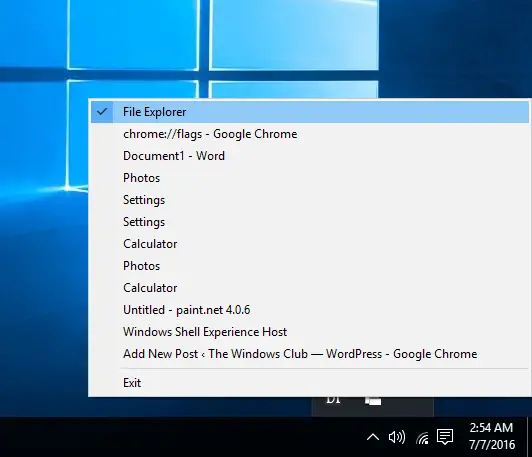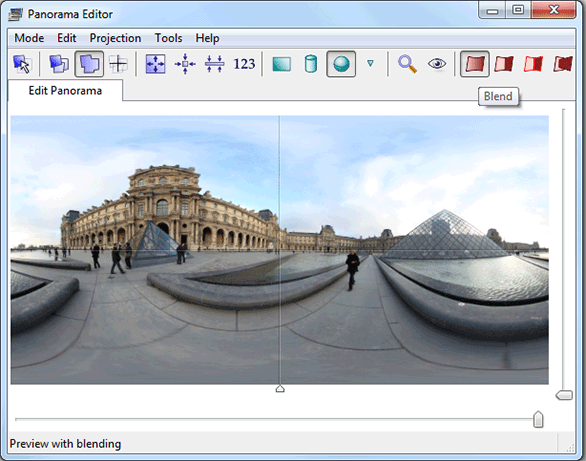

Want to block out the tripod, you need to paint it red, which you can encircle with the Draw tool and fill your enclosed object with red using the Fill tool With PTGui, you can paint the objects you want to mask out in red or green, but notice that red is for hiding objects from your final panorama, while green is for preserving objects so they come out visible in your output. This technique is used to fix blending errors. Masking is frequently resorted to when there are moving objects in your panoramic images that result in doubles, or when you don’t want to see your tripod showing on the nadir image. That way, by having your 360 camera swiveling on a fixed point, you have ensured that the perspective remains the same, and saved yourself the headache of having stitching errors. This technique is also explained by its inventor, Philippe Hurbain on his personal website. If you don’t have a panohead, you can also craft a philopod, which is a piece of string tying the no-parallax point of your camera at one end with a weight at the other end. To solve that problem, you need to attach a panoramic head, panoheadfor short, onto your tripod, to help rotate your camera around the front of the lens.


Now suppose if you mount your camera on a tripod and start turning it on its base, the lens/perspective is constantly changing as you take images for your panorama. The viewpoint for your camera lens is its entrance pupil, also known as no-parallax point or nodal point. To avoid having stitching errors, we recommend that you avoid having parallax at all costs that is also to say, ALL of your images to be stitched into a panorama must be shot from ONE single viewpoint. Limited early bird tickets are available now.Parallax is a phenomenon where two objects in your source images appear to have changed their relative positions from one to another, because of changes in the camera’s perspective. If you want to shoot scenes like this under the amazing dark skies of the Kanab area, another outstanding opportunity to learn more about astro-landscape photography is by joining the outstanding group of instructors at the 2022 Nightscaper Conference April 26-29. If you want to learn more about planning with PhotoPills, sign up for the waitlist for our PhotoPills Bootcamp: Bryce Canyon and be sure to get on our mailing list, as we’re sure to offer more PhotoPills workshops in the future. I hope you enjoyed coming along with me to one of the jewels in the crown of Grand Staircase-Escalante National Monument. Making other photos while waiting on your dream image is the right way to warm up and to work out the kinks in any scene. I made star trails, star point stacks and even a vertorama (not included here). What’s also essential is to look at a scene and have a bunch of other “tools in your toolbelt.” In this case, I was laser-focused on making a pano with the Milky Way arch, but it wasn’t the only photo I made that night. PhotoPills was crucial in planning this from the hotel in Kanab. It always pays to know when your celestial objects are going to be in the right place. I felt comfortable leaning toward letting in more light in the near-darkness versus a “correct” exposure with little information to post-process. I opted for an educated guess of 15 seconds to drink in as much light as I could.
PTGUI ALWAYS ON TIP ISO
(See the post “ NPF: The New Rule for Shooting the Sharpest Stars in the Sky” for further information.) I was already at ISO 12,800 and didn’t want to push further. NPF exposure duration for that lens on my Nikon Z 6 is 18.04 seconds for Default and 9.02 seconds for Accurate (Figure 7). I chose the Irix 15mm lens for this shot. (Though I did end up getting it in one pass-lucky!) Repeatability was necessary because I planned to execute the pano sweep three times with different settings. This setup gives me reliable and repeatable rotations.

I placed and leveled my Novoflex TrioPod Pro75, then mounted my VR-System Slim Multi-Row Panorama System. This gave the otherwise dull and dark trees shape and texture. The concept was to cast shadows toward our lenses and radiating outward toward the arch. As we began setting up the panorama sweep, we set another Luxli Fiddle in the two trees in front of us.


 0 kommentar(er)
0 kommentar(er)
